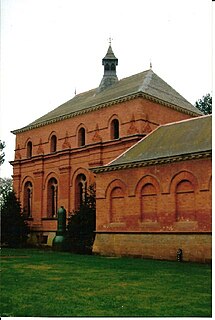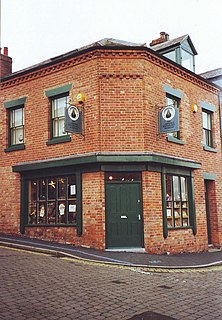
The East Midlands is one of nine official regions of England at the first level of NUTS for statistical purposes. It consists of Derbyshire, Leicestershire, Lincolnshire, Northamptonshire, Nottinghamshire and Rutland. The region has an area of 15,627 km2 (6,034 sq mi), with a population over 4.5 million in 2011. There are five main urban centres, Derby, Leicester, Lincoln, Northampton and Nottingham. Others include Boston, Skegness, Chesterfield, Corby, Grantham, Hinckley, Kettering, Loughborough, Mansfield, Newark-on-Trent and Wellingborough.

Nottinghamshire is a county in the East Midlands region of England, bordering South Yorkshire to the north-west, Lincolnshire to the east, Leicestershire to the south, and Derbyshire to the west. The traditional county town is Nottingham, though the county council is based in West Bridgford in the borough of Rushcliffe, at a site facing Nottingham over the River Trent.
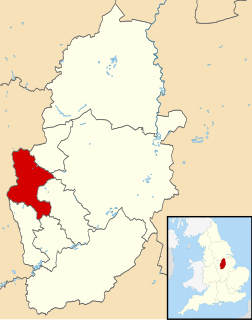
Ashfield is a local government district in western Nottinghamshire, England. According to the 2001 UK census, it has a population of 111,387, increasing to 119,497 at the 2011 Census. The district is mostly urban and contains parts of both the Nottingham Urban Area and the Mansfield Urban Area. The area has a tradition of coal mining. There are three towns in the district; the largest being Sutton-in-Ashfield. Settlements in the district include the following:

Hucknall, formerly Hucknall Torkard, is an English town in the district of Ashfield, Nottinghamshire. It was historically a centre for framework knitting and then for mining, but is now a focus for other industries and a dormitory town for Nottingham. It was the site where Rolls-Royce made the first demonstration of a vertical take-off plane. It is also the final resting place of Lord Byron in 1824 and of his estranged daughter, the mathematician and pioneer computer programmer Ada Lovelace in 1852.
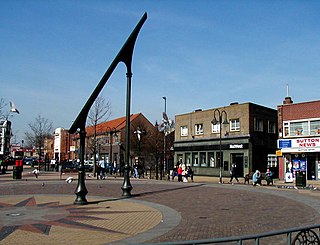
Sutton-in-Ashfield is a market town in the Ashfield district of Nottinghamshire, England, with a population of around 45,804. It is situated four miles west of Mansfield, two miles from the Derbyshire border and twelve miles north of Nottingham.
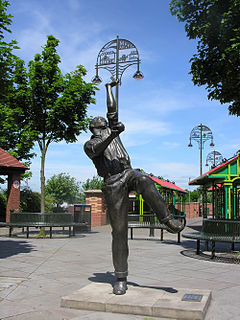
Kirkby-in-Ashfield is a market town in Nottinghamshire, England, with a population of 25,265, falling to 20,672 for the total of the 3 Ashfield Wards taken at the 2011 census. It is a part of the Mansfield Urban Area. The Head Offices of Ashfield District Council are located on Urban Road in the town centre.

The River Erewash is a river in England, a tributary of the River Trent that flows roughly southwards through Derbyshire, close to its eastern border with Nottinghamshire.

Jacksdale is a small former mining village situated in the local government district of Ashfield, part of the English county of Nottinghamshire. The population of the ward within the Ashfield Council was 3,158 as taken at the 2011 census. Lying close to the Derbyshire border, Jacksdale is the most westerly place within the county. Neighbouring villages include Selston, Brinsley, Pye Hill and Ironville. Jacksdale and Westwood are interlinking villages, although houses in Westwood are usually referred to as being newer, with 86 per cent of the housing in Jacksdale built before 1918.
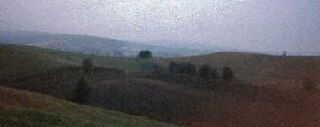
The Misk Hills consist of a gently undulating sandstone plateau between Hucknall and Annesley in the county of Nottinghamshire in the North East Midlands of England. They offer views Southwards across the town of Hucknall, and the City of Nottingham. They are locally considered to be the first hills in the Pennine Chain, and rise to a high point of 170 metres above sea level from the flat plains to the east. The hills are the source of three minor watercourses, the Gilt Brook, the Whyburn and Farleys Brook. They separate the Leen Valley from the Erewash Valley.

Underwood is a hilltop village within the civil parish of Selston in the English ceremonial county of Nottinghamshire. The village is a ward of Ashfield with a population of 2,953 taken at the 2011 Census. It stands in a former coal mining area in the Hidden Valleys and is in the local government district of Ashfield. The village offers views across the Erewash Valley towards the Southern Pennines. It is situated near to junction 27 of the M1 and is bordered by Bagthorpe and Selston, and Brinsley and Moorgreen to the south. The gardens of Felley Priory are accessible from the village. It is part of Nottinghamshire's 'Hidden Valleys' area.

Rainworth is a village which is split between the Newark and Sherwood and the Mansfield districts of Nottinghamshire, England.
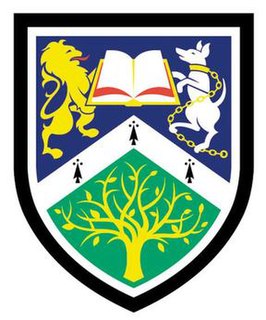
Ashfield School is a secondary school with academy status located in Kirkby-in-Ashfield, Nottinghamshire, England, which educates children ages 11-19.

St Wilfrid's Church, Kirkby-in-Ashfield is a parish church in the Church of England in Kirkby-in-Ashfield, Nottinghamshire.

St John the Evangelist's Church, Kirkby-in-Ashfield is a parish church in the Church of England in Kirkby Woodhouse, Nottinghamshire.

Annesley Old Church or the Church of All Saints, Annesley Park, is a disused church in a ruinous condition which stands on a mound near to Annesley Hall, Nottinghamshire. The building remains are Grade I listed and are surrounded by a graveyard. The site is scheduled as an ancient monument.

Nottingham Industrial Museum is situated in part of the 17th-century stables block of Wollaton Hall, located in a suburb of the city of Nottingham. The museum won the Nottinghamshire Heritage Site of the Year Award 2012, a local accolade issued by Experience Nottinghamshire, an organisation funded variously by Nottingham City Council, Nottinghamshire County Council and other sources.









